The North Face Router Backpack Review
The North Face Router Backpack is a large 40-liter travel backpack that can compress well enough to be used as a daypack.
Our Verdict
Save time. Get access to brief summaries of our reviews so you can browse and make decisions more efficiently.
Pros
- Compresses enough to look and feel like a daypack
- Shoulder straps articulate and move easily
- Just the right balance of organization and spaciousness
Cons
- Water bottle pockets don’t grip slender bottles well
- Hip belt doesn’t add a lot of support
- Inverted access to front top pocket unintuitive
Technical Details
-
Capacity
40l
-
Weight (lb)
2.94 lb (1.3 kg)
-
Dimensions
21 in x 12.5 in x 9 in (53.3 x 31.8 x 22.9 cm)
-
Notable Materials
Ripstop Nylon, YKK Zippers, Duraflex Hardware, ITW Hardware
-
Manufacturing Country
Indonesia
-
Laptop Compartment Size
17"
-
Warranty Information
Full Review
Large travel backpacks typically have the unfortunate Achilles’ heel of being well-sized for the occasional vacation but too large for everyday use. Sure, some users actually need the large capacity of a travel backpack because they’re packing a lot of gear, but for those who pack light most of the time, it makes more sense to go with a daypack. Luckily, travel backpacks like The North Face Router Backpack can pull double duty as daypacks without being too cumbersome to carry around.

All of that said, The North Face didn’t do anything too drastic to make the Router act more like a daypack. They just added a few compression straps here and there to an aesthetic oddly reminiscent of their other prominent daypacks, and voila! You have a 40-liter travel backpack that doesn’t look out of place in an office full of daypacks.
External Components
The first thing that stands out about the Router Backpack is its scale. It’s a large backpack, yet it still looks like a daypack. It kind of plays this mind trick that makes you think it’s smaller by closely resembling other smaller daypacks like the 28-liter Borealis or 31-liter Surge. Perhaps it’s because the large logo immediately focuses your attention and blurs the rest of the bag, but that’s just a theory. Regardless of how it pulls this off, it’s a positive thing. Let’s put it this way: It’s a 40-liter backpack that doesn’t look intimidating for day-to-day use. It’s not boxy, and it’s not sack-like; it’s just a big-ified daypack.
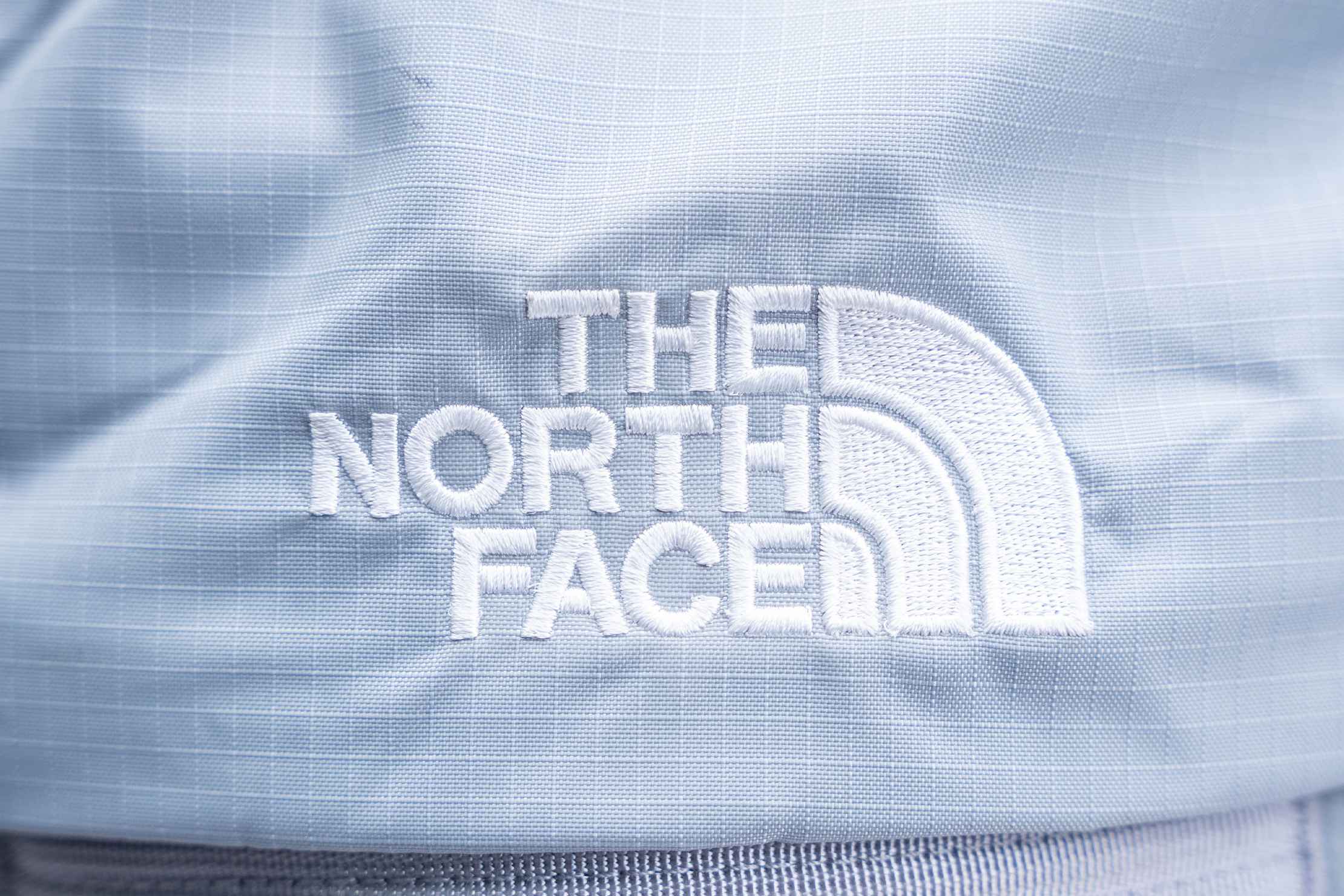
The front handle is one of the more obvious clues that denote the Router’s larger-than-daypack size. Most daypacks settle for a top handle, usually a plain thin piece of nylon between the shoulder straps. Meanwhile, travel backpacks throw some at the sides, the front, and maybe even the back for good measure. Here, the Router has a beefy front grab handle, so you can pull it fairly easily from a car trunk or the floor if you set it lying on its back panel. There’s also one at the top that’s just as reassuringly thick as the one on the front.
Unfortunately, there are no side handles, but there are water bottle pockets. The Router has two, so you can double up on insulated bottles if you want to drink plenty of water while traveling. However, both are so big that they don’t really hold slender bottles (like an 18-ounce Hydro Flask) in place. You’ll either have to use a larger bottle that fits snugly in place or utilize the side compression straps with a carabiner to lock your bottle’s handle.

We’re a bit puzzled at the tarpaulin-like material on the water bottle pockets. Based on other bags we’ve tested, elasticated fabric or stretchy mesh usually do a better job of holding bottles in place. We think that The North Face went with tarp for better water resistance. Either that or it’s an aesthetic design choice; the matte black’s slick texture is arguably appealing.
Speaking of materials, the main fabric on the Router is a 210-denier recycled ripstop nylon with a DWR-coating of water resistance. That’s almost as puzzling as the decision to go with tarp for the water bottle pockets. It’s a notably light fabric, denier-wise, for a travel backpack. For example, you’ll see ballistic nylon on bags like the Aer Travel Pack 3 or ALPAKA Elements Travel Backpack with deniers north of 800. Rest assured, though, that the Router feels well built, as expected of a backpack from a reputable brand like The North Face. Plus, a lighter fabric undoubtedly helps keep the weight down on this 40-liter backpack.

A key factor in taming the Router’s 40-liter size is compression straps. As mentioned, there are some on the sides near the water bottle pockets and an additional two at the bottom. Cinch these down, and the Router slims much closer to daypack-like proportions. As a bonus, the bottom straps have elastic strap keepers, which minimize the strap-dangly look of the Router.
Now let’s check out the harness system, which The North Face calls the FlexVent suspension system. It’s certified by the American Chiropractic Association, so make of that what you please. Since we’ve made a big deal about the Router’s size being tameable, you’d expect this harness system to be fairly robust and comfortable—and that’s exactly how it is.
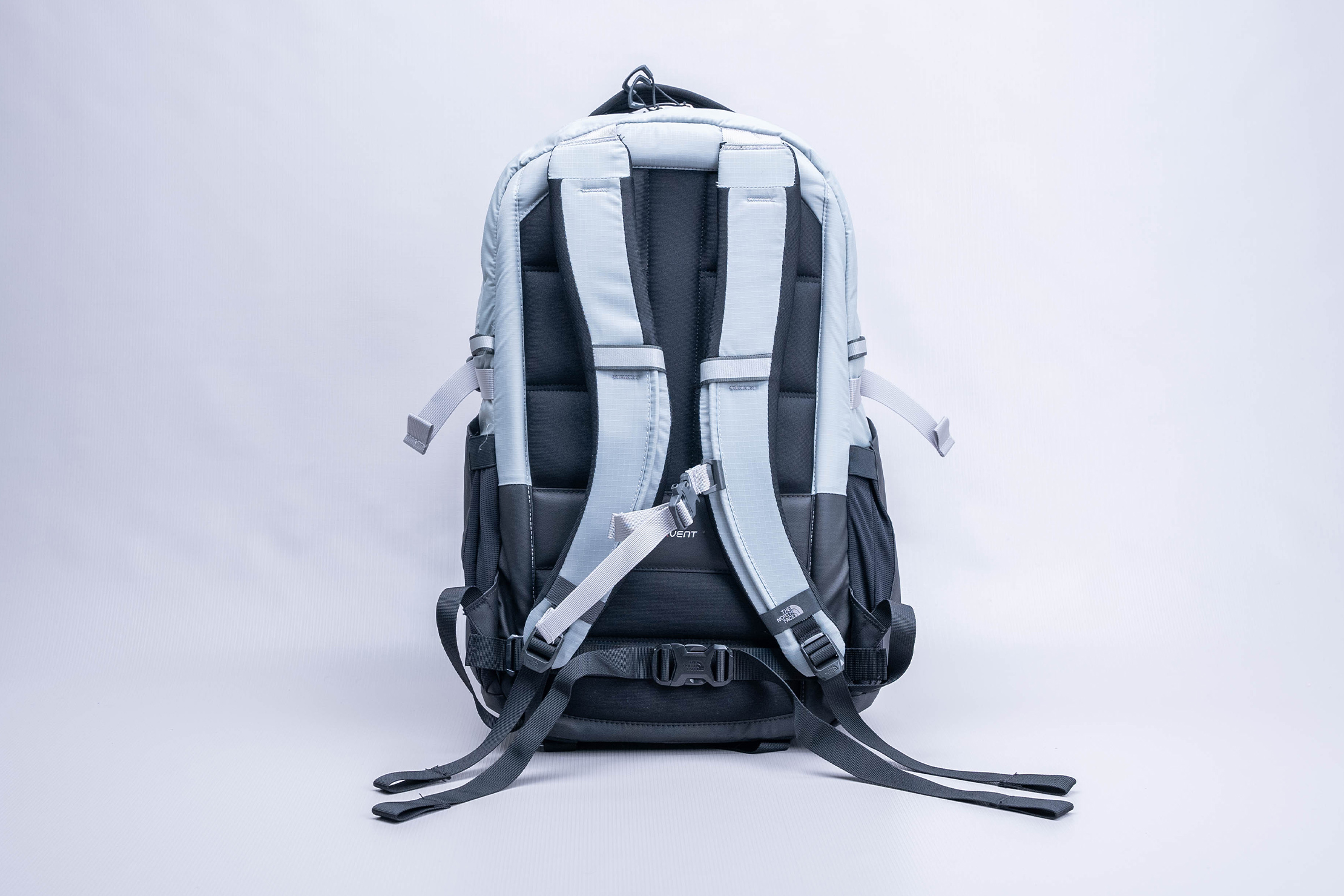
That said, we think the most notable feature of the harness system is how the shoulder straps are mounted. Instead of being continuously thickly padded, there’s a narrow segment of fabric bridging the shoulder straps to the top edge of the bag. It’s a small detail, but it allows the straps to flex and fall more freely depending on the shape of the users’ shoulders. We’ve seen other backpacks do this, like Bellroy’s 16-liter Oslo, but it’s arguably more impactful on large backpacks, like the Router.
The shoulder straps themselves are thickly padded for comfort and naturally curve to match the body’s shape. If you want to attach a carabiner or other small accessories, there are reflective loops on each shoulder strap, plus one on each side of the bag itself. As you might expect, there’s also a sternum strap, and it’s on a rail that lets it slide, granting you very granular adjustments. The buckle also has a built-in whistle, by the way, in case you need to call attention to yourself. Sadly, there are no strap keepers to accompany the adjusters, so you’ll either have to fashion some yourself or let them dangle as is.

Should you need additional support, the Router also sports a simple hip belt. There’s nothing fancy about this belt, like thick padding, pockets, or magnets. It can’t shift a ton of weight away from the shoulder straps, but it can help keep the Router’s lower section close to you since it’s also a fairly tall bag.

Last but not least is the back panel. It has many padded sections with breaks in between that act as air channels. The Router can carry a ton of weight, and this amount of padding suffices to cushion a lot of it when the going gets tough for lengthy periods of time, like waiting in an airport, for example.
Fit Notes

As expected, the Router is very easy to carry despite being a large 40-liter backpack. Once we had the compression straps cinched down, the shoulder straps were more than up to the task of cushioning the load onto the shoulders. That said, we still wish the hip belt provided more support beyond just keeping the bag’s lower portion close to us. However, moving around, walking, and reaching for gear is not bad since the fabric bridging the shoulder straps to the bag lets them flex as freely as your arms.
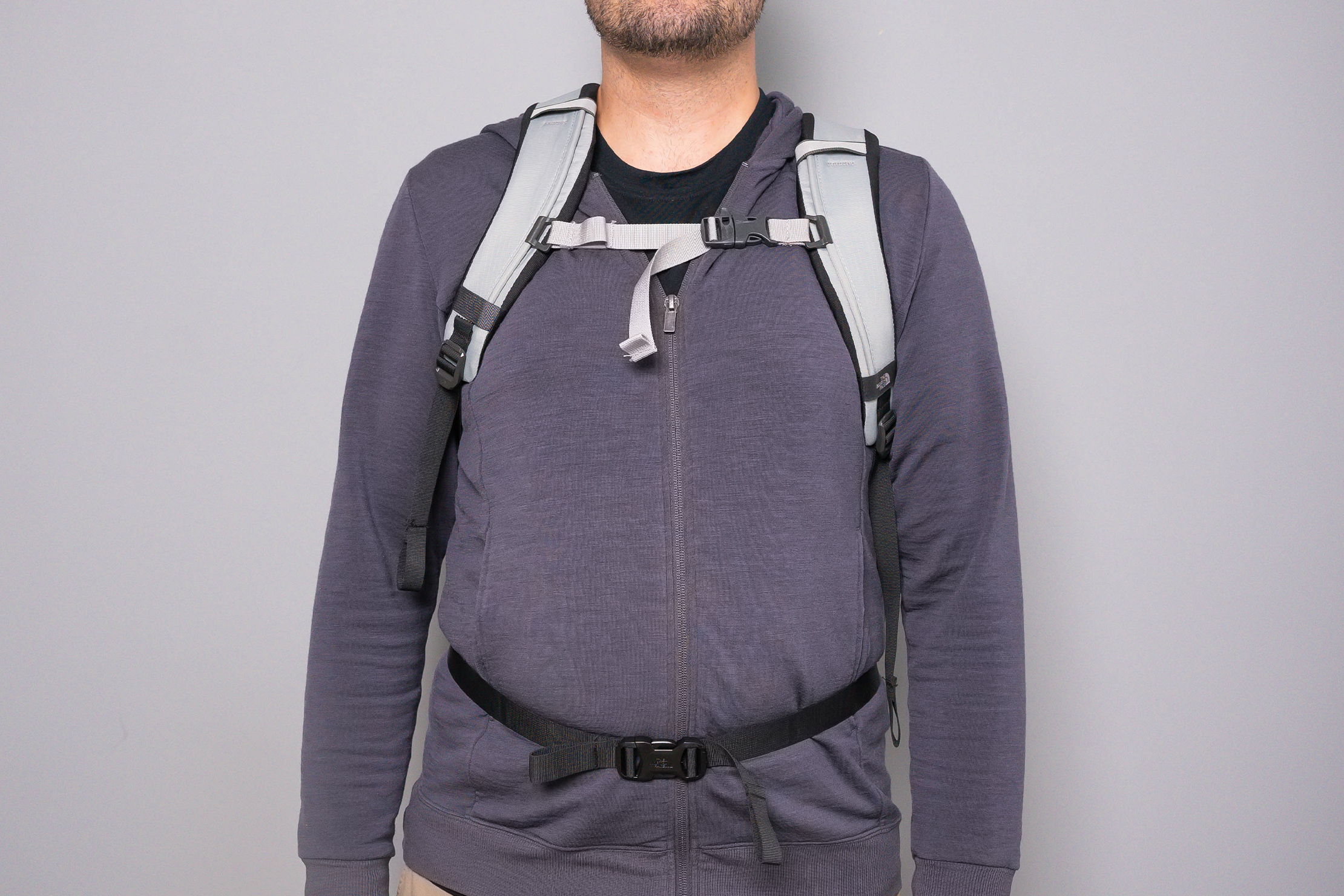
More so than freedom of movement, the Router doesn’t make us self-conscious when using it as a daily backpack. Other travel backpacks, as functional as they are, often come across as too boxy and imposing, and they definitely stand out when you’re carrying them to a local coffee shop or park. The Router disguises itself well as just another The North Face daypack—it’s pretty lowkey.
Inside The Backpack
Make no mistake, the Router is a full-fledged travel backpack, and it’s hard not to ignore that fact once you start looking at the finer details. Secondary pockets include a large front fold-out compartment with two large interior mesh pockets. This pocket alone was enough to eliminate an entire packing cube we would’ve dedicated to socks and gloves. Dirty ones go in one, clean ones in the other; it’s that simple. And yes, the pockets are spacious enough to spread compressed socks to prevent them from bulging out the front.

A neat little detail is how the compartment’s zipper resides in a triangular garage up in the corner. As reliable as the #5 YKK zippers are, it never hurts to add another layer of protection and seal to prevent debris from sneaking in.
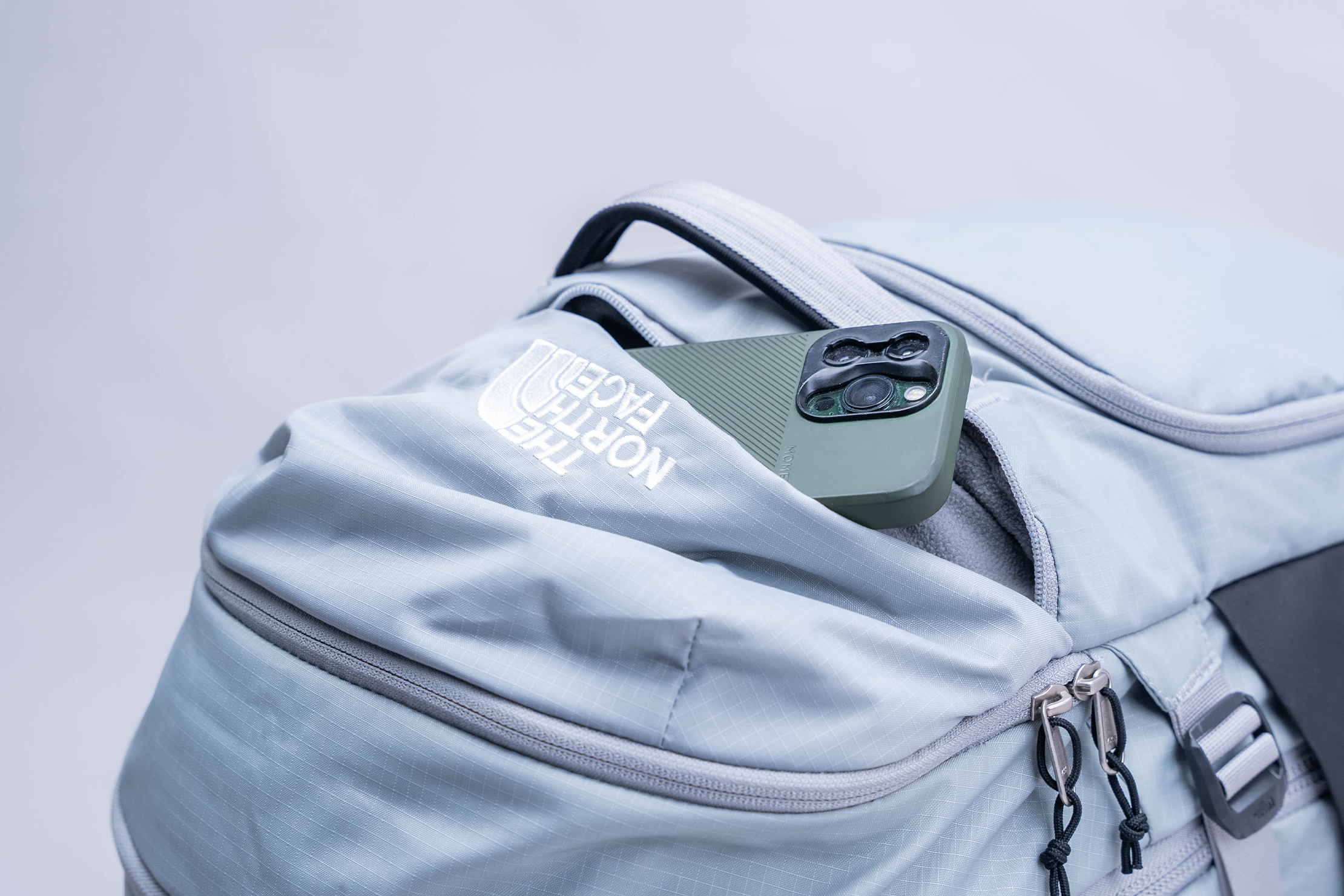
Above is another zippered pocket lined with very soft fleece to prevent damage to easily scratched items, primarily sunglasses, and smartphones with particularly scratch-prone chassis. However, it’s very strange that it’s oriented upside down, so the space goes up the curve instead of down toward the base of the bag when you reach inside. You would usually expect a pocket to flow down since that’s where gravity pulls objects towards, but not in this case, it seems. There is a shallow bottom lip that can catch gear as it falls down, but it’s not an ideal layout overall.
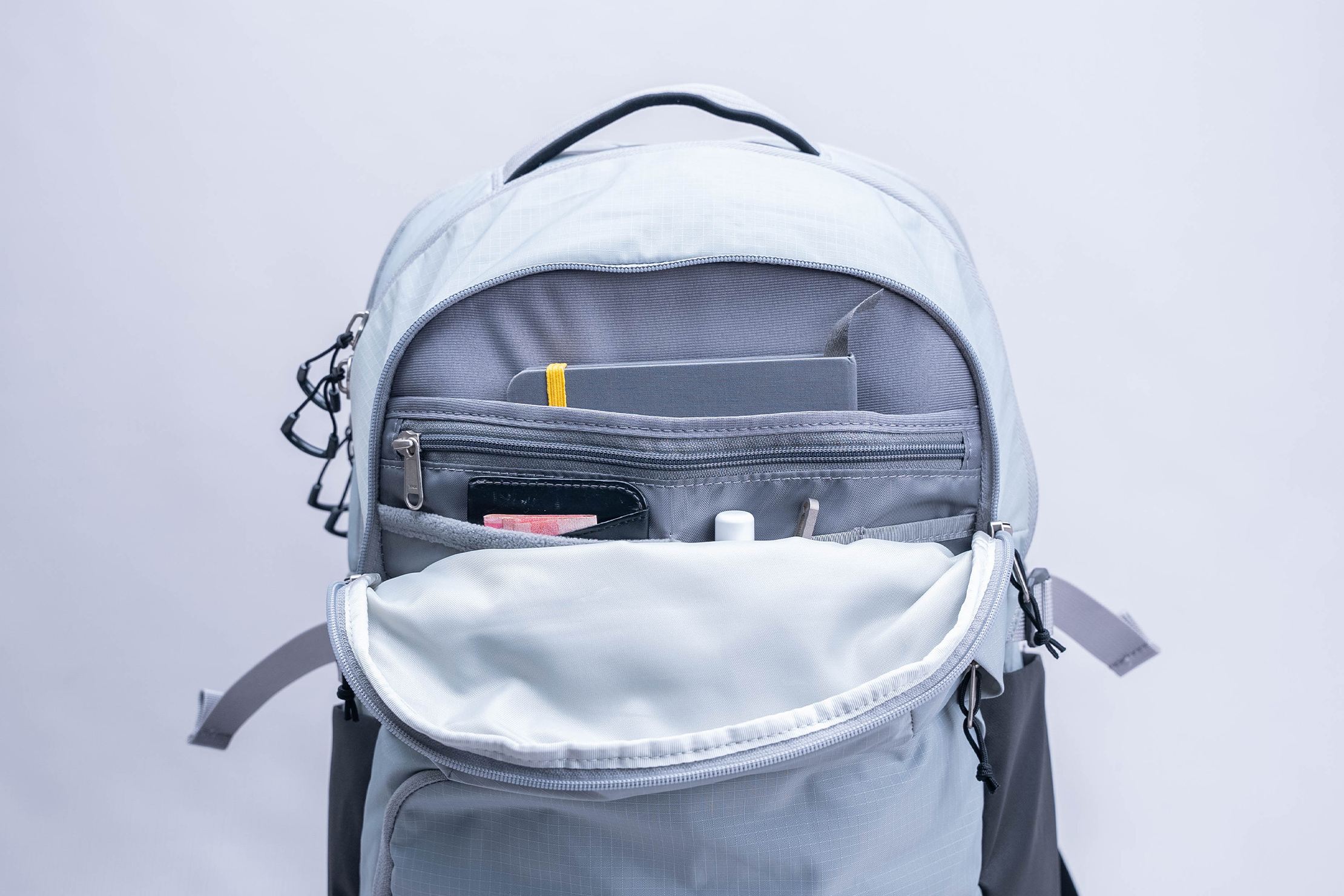
Next up is the Router’s admin panel. This compartment handles a more granular organization of smaller gear. Inside are two side-by-side mesh pockets, two wide pen pockets next to a liner pocket, a zippered pocket, and, at the very back, a tablet sleeve. Overall, we like the variation in pocket sizes since we can store anywhere from a small tablet to an AirTag if we want to. If we were to nitpick, it’s that the pen pockets are too wide for pens but too narrow for anything beefier we tried to fit. Still, the organization level is just right for our use case, as it can accommodate most everyday carry items.
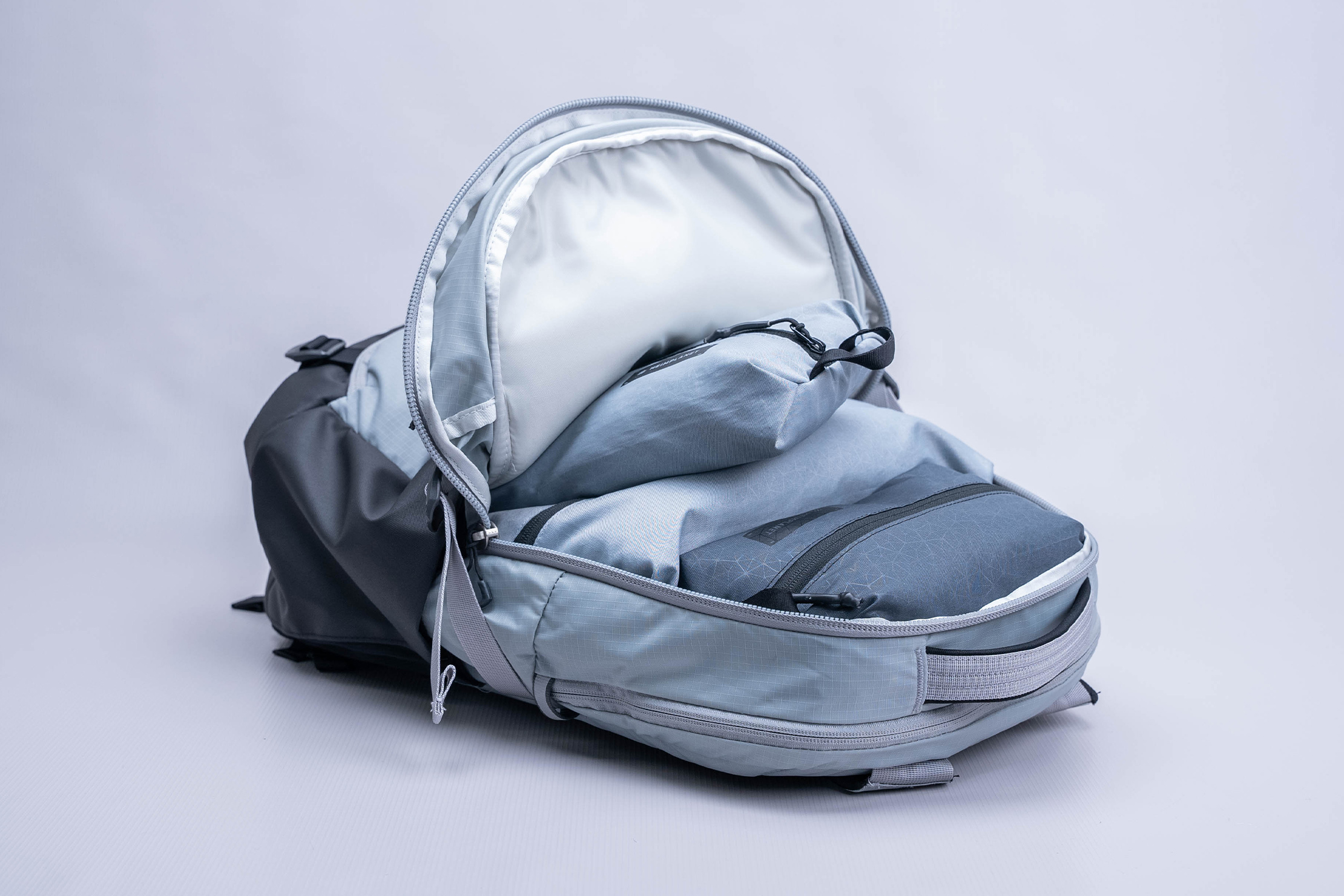
Laptops get their own separate compartment all the way at the back, where such compartments typically are found on travel backpacks. The compartment opens up horseshoe-style with gussets at the sides to prevent it from opening too wide. You can fit up to a 16-inch MacBook Pro inside with enough space left for a false bottom. It’s not the biggest false bottom we’ve seen on a travel backpack, but it’s enough to absorb an impact if you set the bag down a bit too hard. The back panel’s rigidity also helps absorb some of that impact. You can fit a tablet in the pocket in front of the laptop sleeve, too, along with extra accessories in the open space.
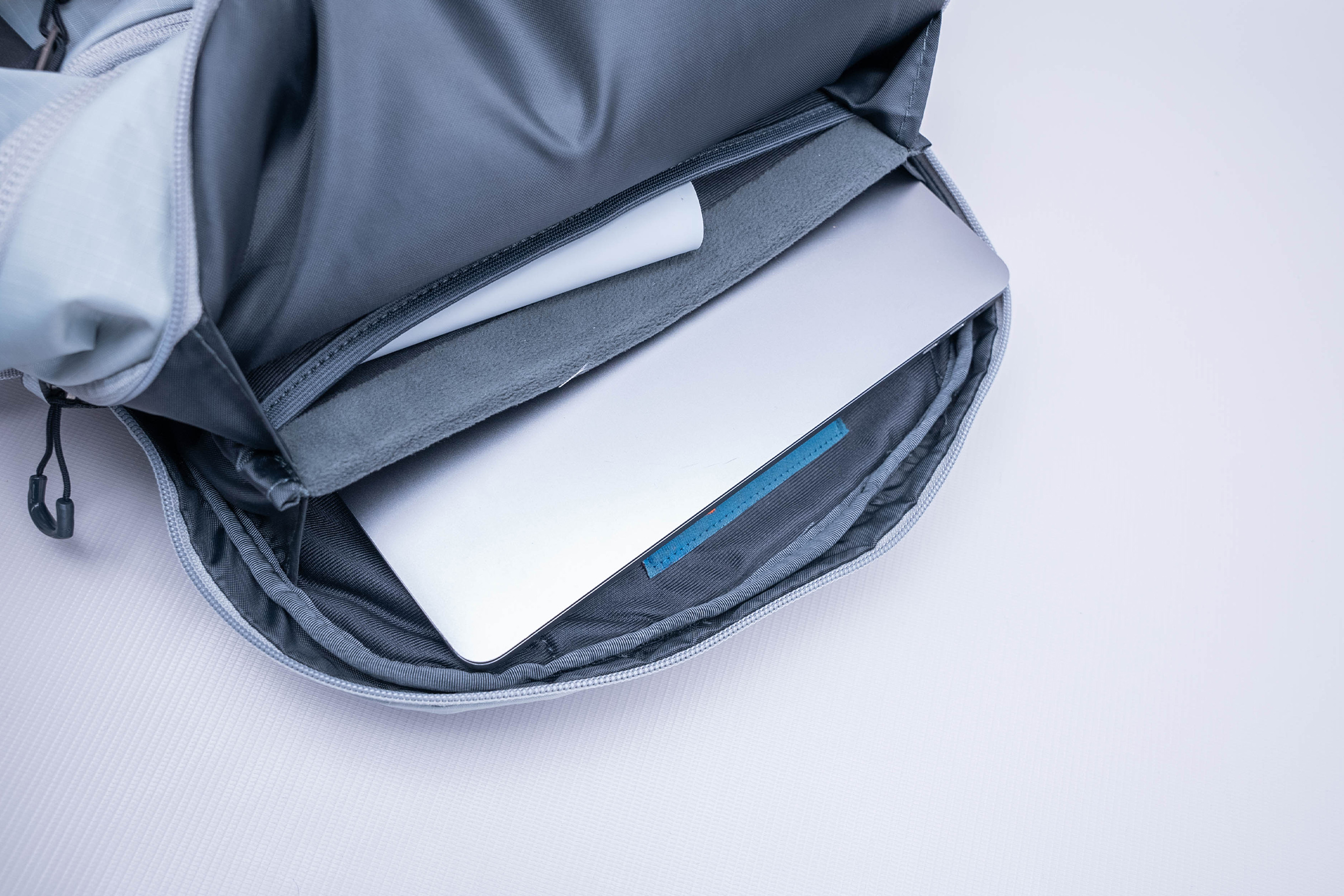
With all of those compartments and pockets out of the way, what is left in the main compartment? As expected, it’s an open space where you can pack all of your main gear. There are no dividers or pockets, so it’s an ideal space to use packing cubes and pouches to keep clothing and accessories grouped together. The pockets adjacent to it at the front can cut into this space, but it’s fairly easy to squeeze them out and make everything fit.
Usage Timeline
Condition: Excellent
- Dig that this can really cinch down and maybe passes as an everyday bag along with a travel bag due to detailing and shape
- Like that the straps have a nylon piece that attaches them to the bag for more flexibility, though the straps themselves seem a little thin
- Overall dig the look of the bag
Condition: Excellent
- Really enjoyed the look & feel of this bag being close to a daily carry bag
- Main compartment is great for packing cubes, but some may want a little organization
- We appreciate that the front top pocket is fleece-lined, but it’s a bit odd that the majority of the pocket space is above the zipper
- Overall this is a great, affordable, travel bag



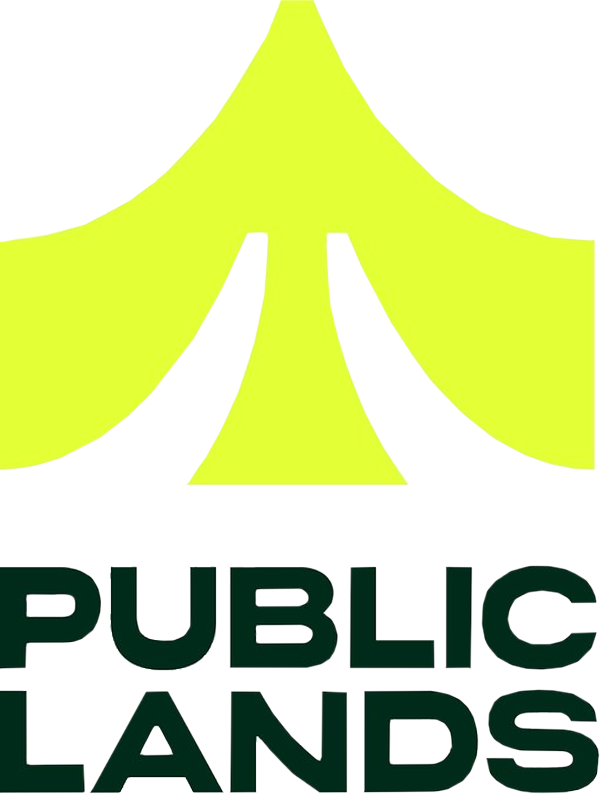



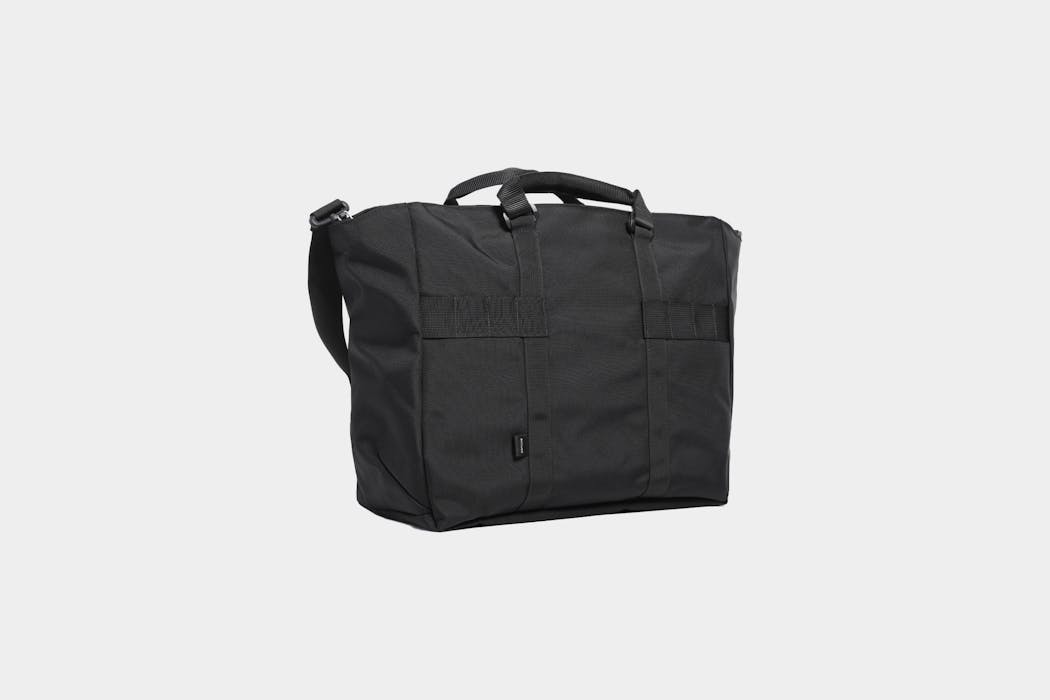

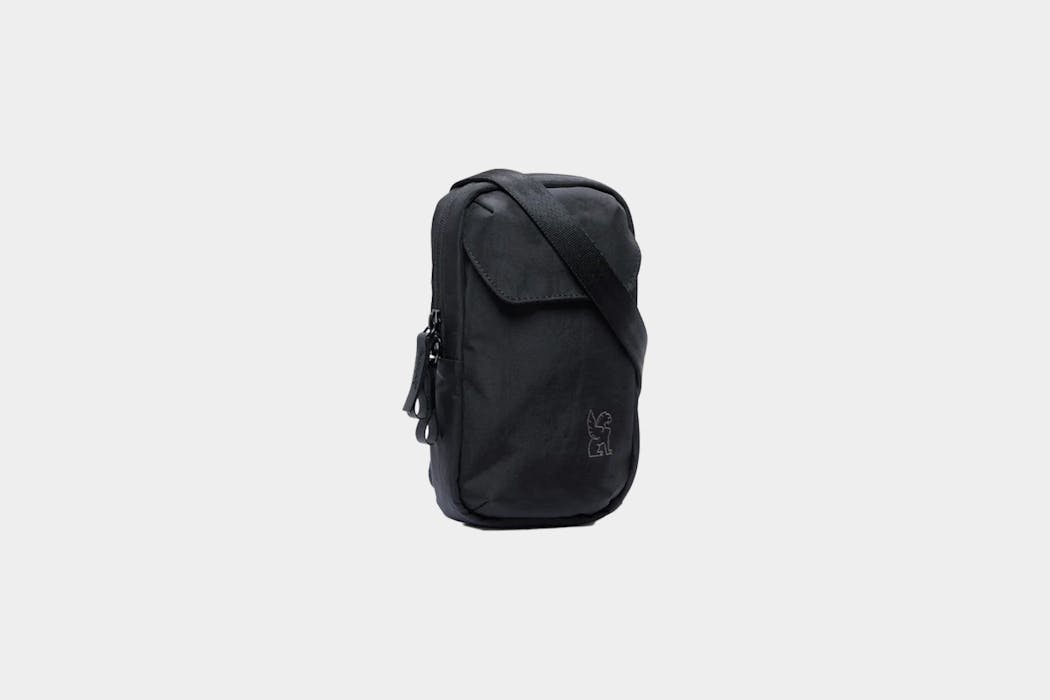
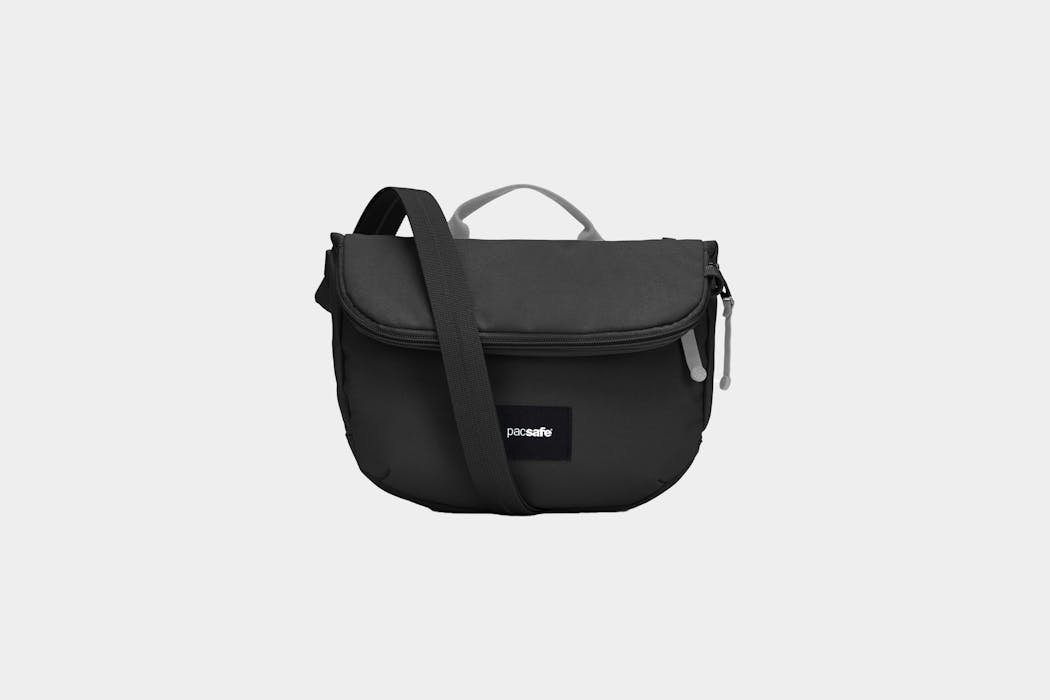
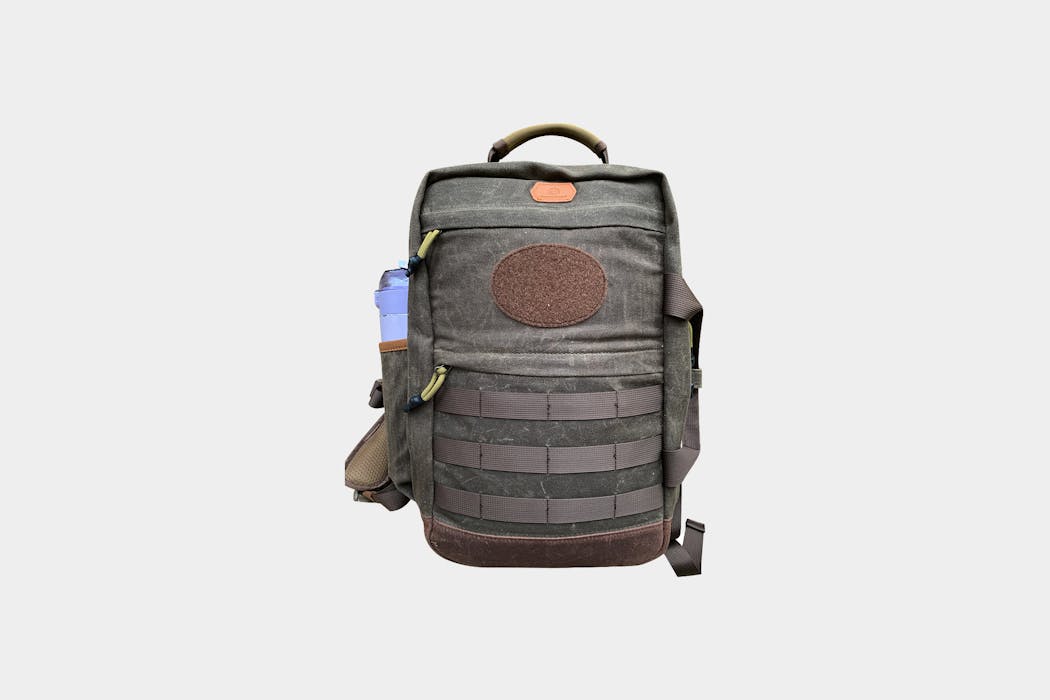
Get your questions about the The North Face Router Backpack answered from our team and the Pro Community right here on the page. Plus, join discussions with other members about gear, guides, and more.
Join Pack Hacker Pro or, Sign In